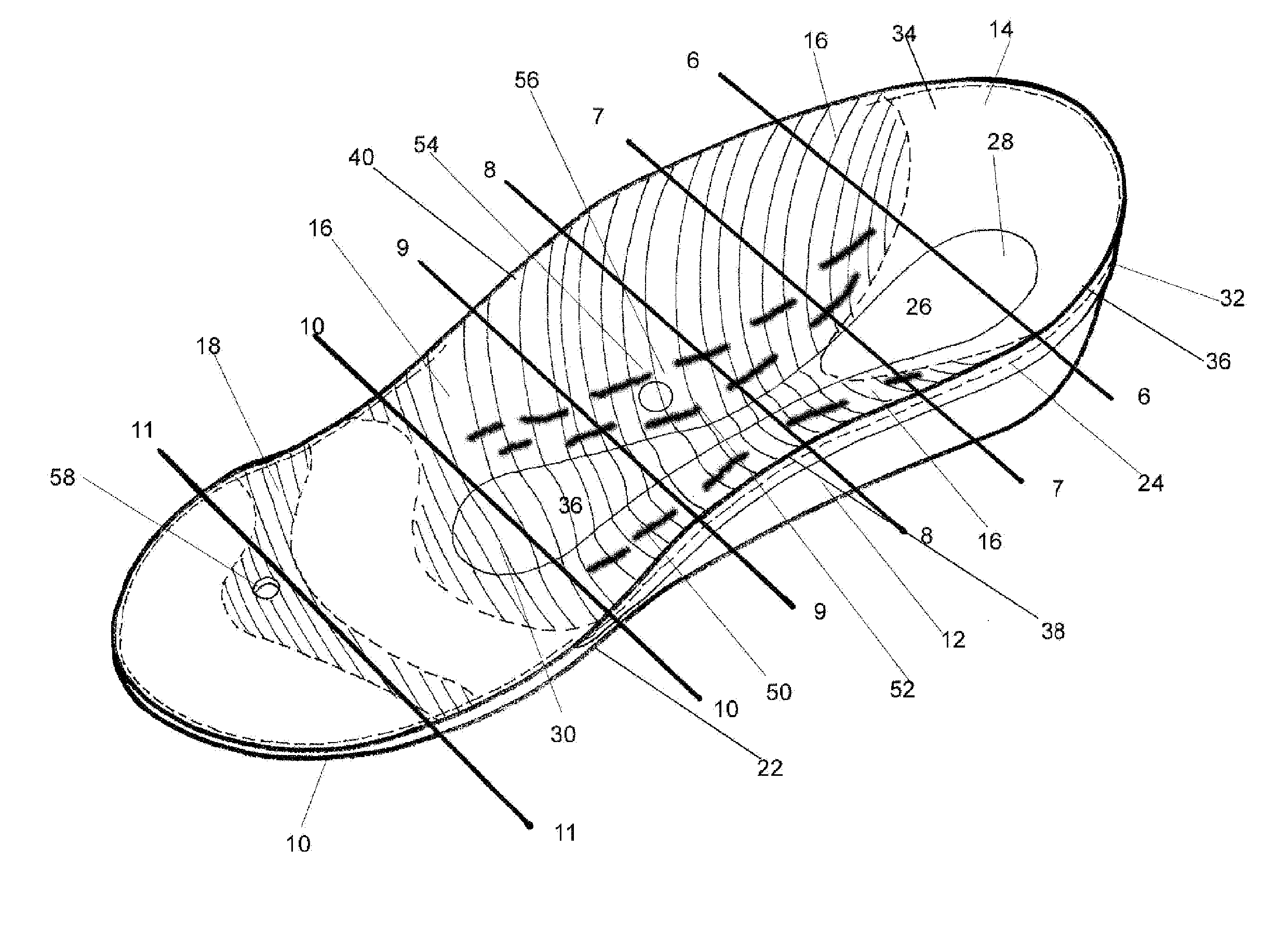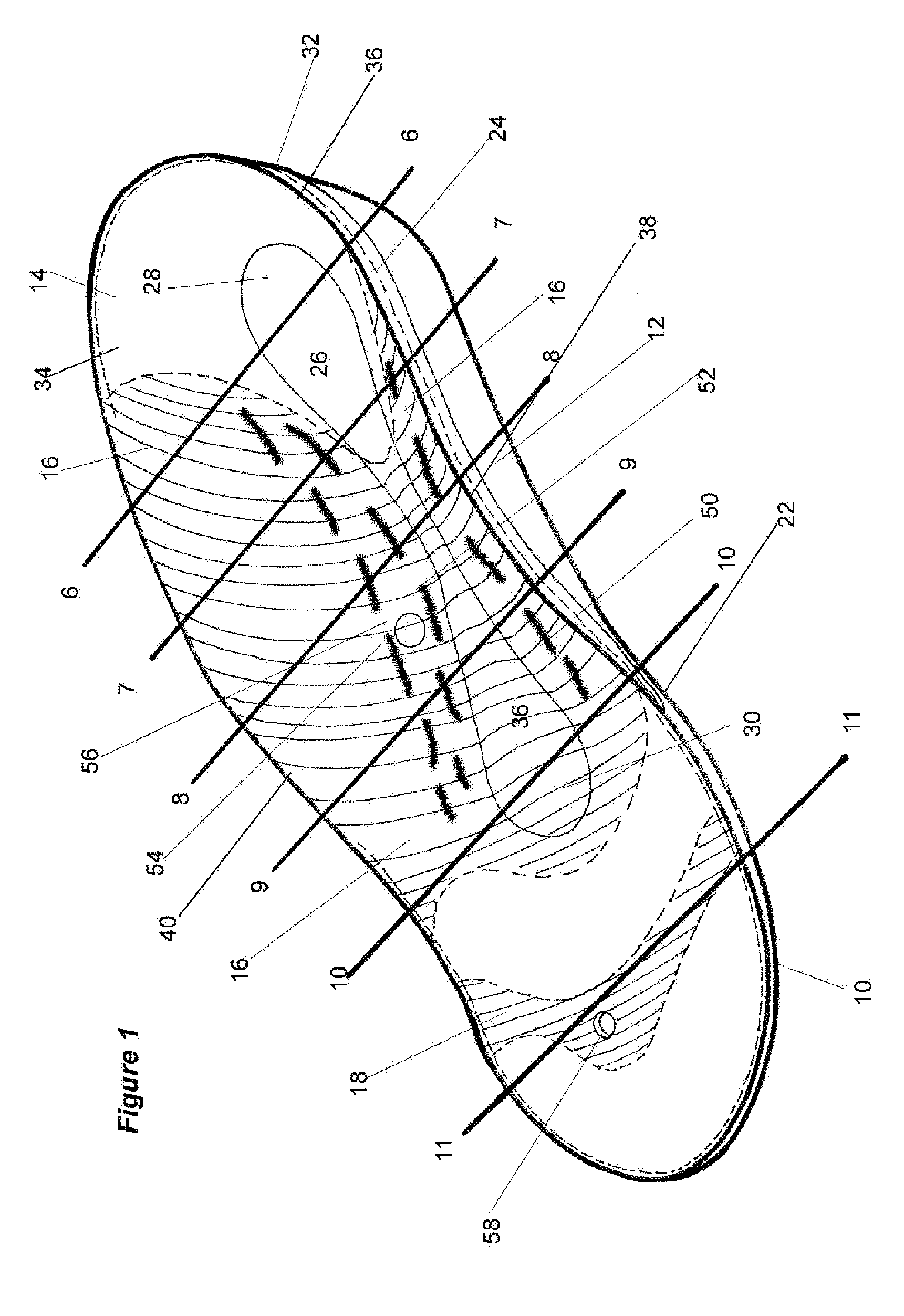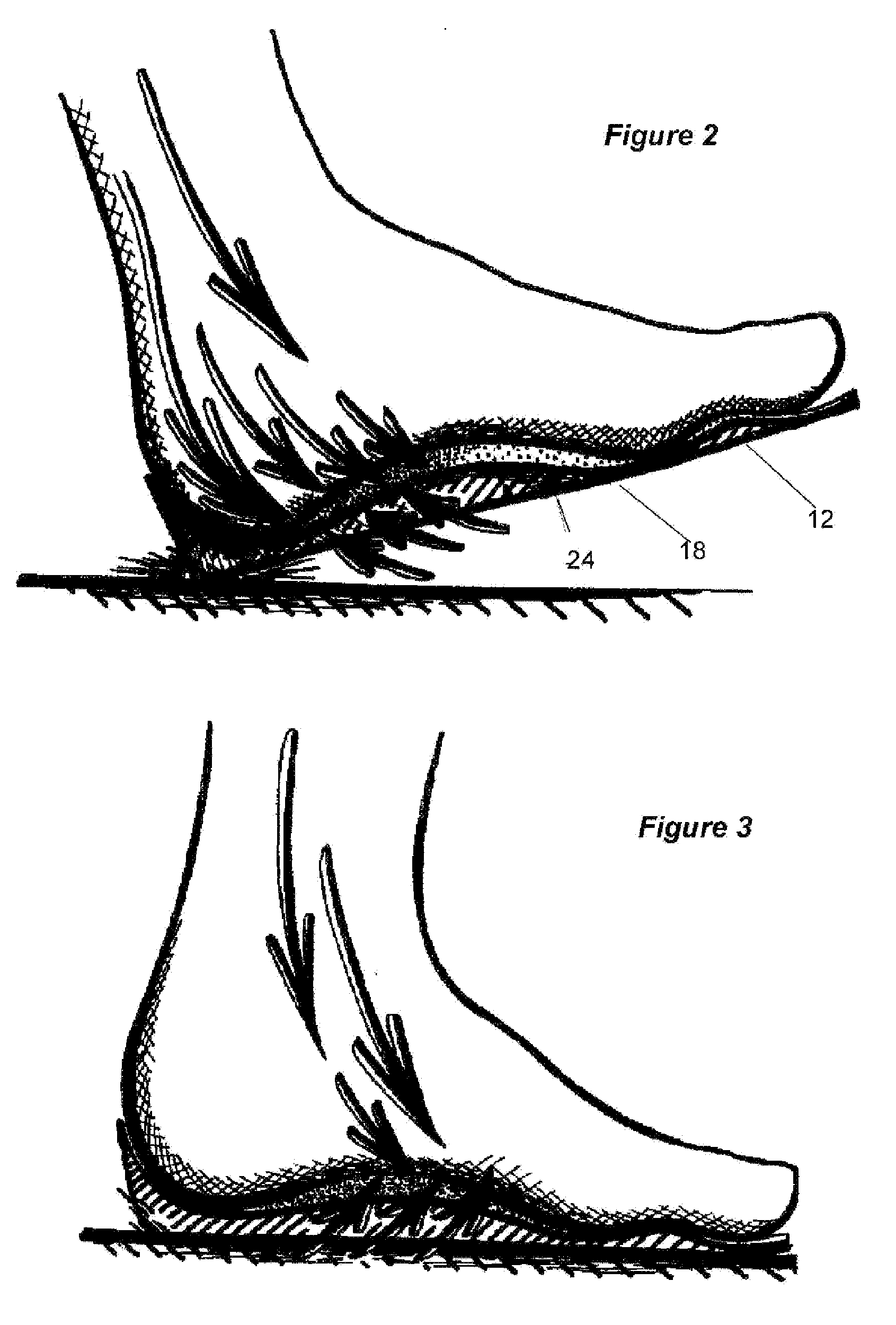Orthotic device
- Summary
- Abstract
- Description
- Claims
- Application Information
AI Technical Summary
Benefits of technology
Problems solved by technology
Method used
Image
Examples
Embodiment Construction
[0057] The present invention, in a preferred embodiment, provides devices and methods for providing dynamic molding of orthotic devices. A preferred embodiment of the present invention is described below. It is to be expressly understood that this descriptive embodiment is provided for explanatory purposes only, and is not meant to unduly limit the scope of the present invention as set forth in the claims. Other embodiments of the present invention are considered to be within the scope of the claimed inventions, including not only those embodiments that would be within the scope of one skilled in the art, but also as encompassed in technology developed in the future.
[0058] Underfoot orthotics are used to help describe one application of the principles though the invention is not confined to this specialty application. The same principles can be applied by the designer to create orthotically dynamic molding support in a large variety of applications in all types of prostheses. A few...
PUM
 Login to View More
Login to View More Abstract
Description
Claims
Application Information
 Login to View More
Login to View More - R&D
- Intellectual Property
- Life Sciences
- Materials
- Tech Scout
- Unparalleled Data Quality
- Higher Quality Content
- 60% Fewer Hallucinations
Browse by: Latest US Patents, China's latest patents, Technical Efficacy Thesaurus, Application Domain, Technology Topic, Popular Technical Reports.
© 2025 PatSnap. All rights reserved.Legal|Privacy policy|Modern Slavery Act Transparency Statement|Sitemap|About US| Contact US: help@patsnap.com



